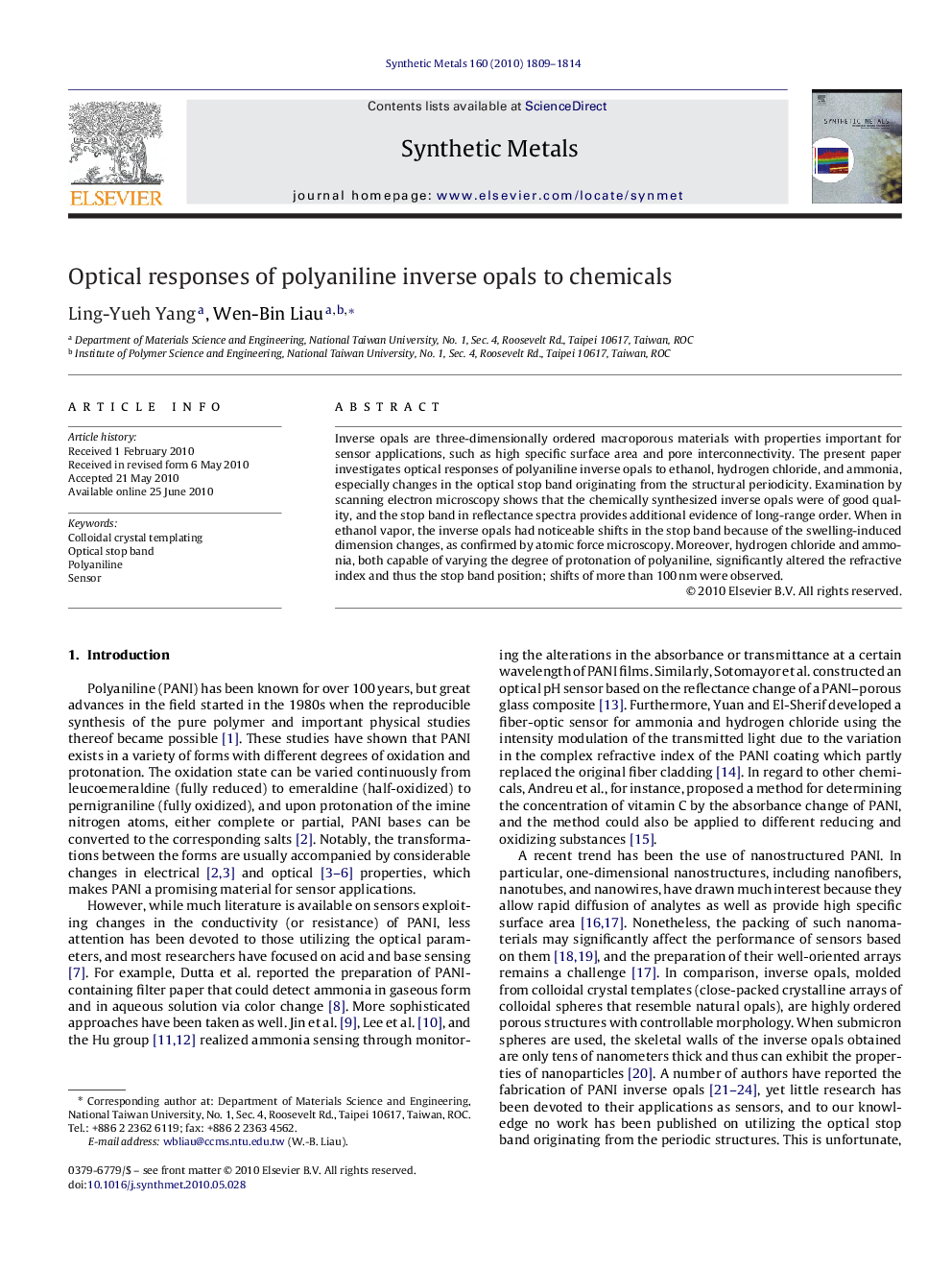| Article ID | Journal | Published Year | Pages | File Type |
|---|---|---|---|---|
| 1442343 | Synthetic Metals | 2010 | 6 Pages |
Inverse opals are three-dimensionally ordered macroporous materials with properties important for sensor applications, such as high specific surface area and pore interconnectivity. The present paper investigates optical responses of polyaniline inverse opals to ethanol, hydrogen chloride, and ammonia, especially changes in the optical stop band originating from the structural periodicity. Examination by scanning electron microscopy shows that the chemically synthesized inverse opals were of good quality, and the stop band in reflectance spectra provides additional evidence of long-range order. When in ethanol vapor, the inverse opals had noticeable shifts in the stop band because of the swelling-induced dimension changes, as confirmed by atomic force microscopy. Moreover, hydrogen chloride and ammonia, both capable of varying the degree of protonation of polyaniline, significantly altered the refractive index and thus the stop band position; shifts of more than 100 nm were observed.
